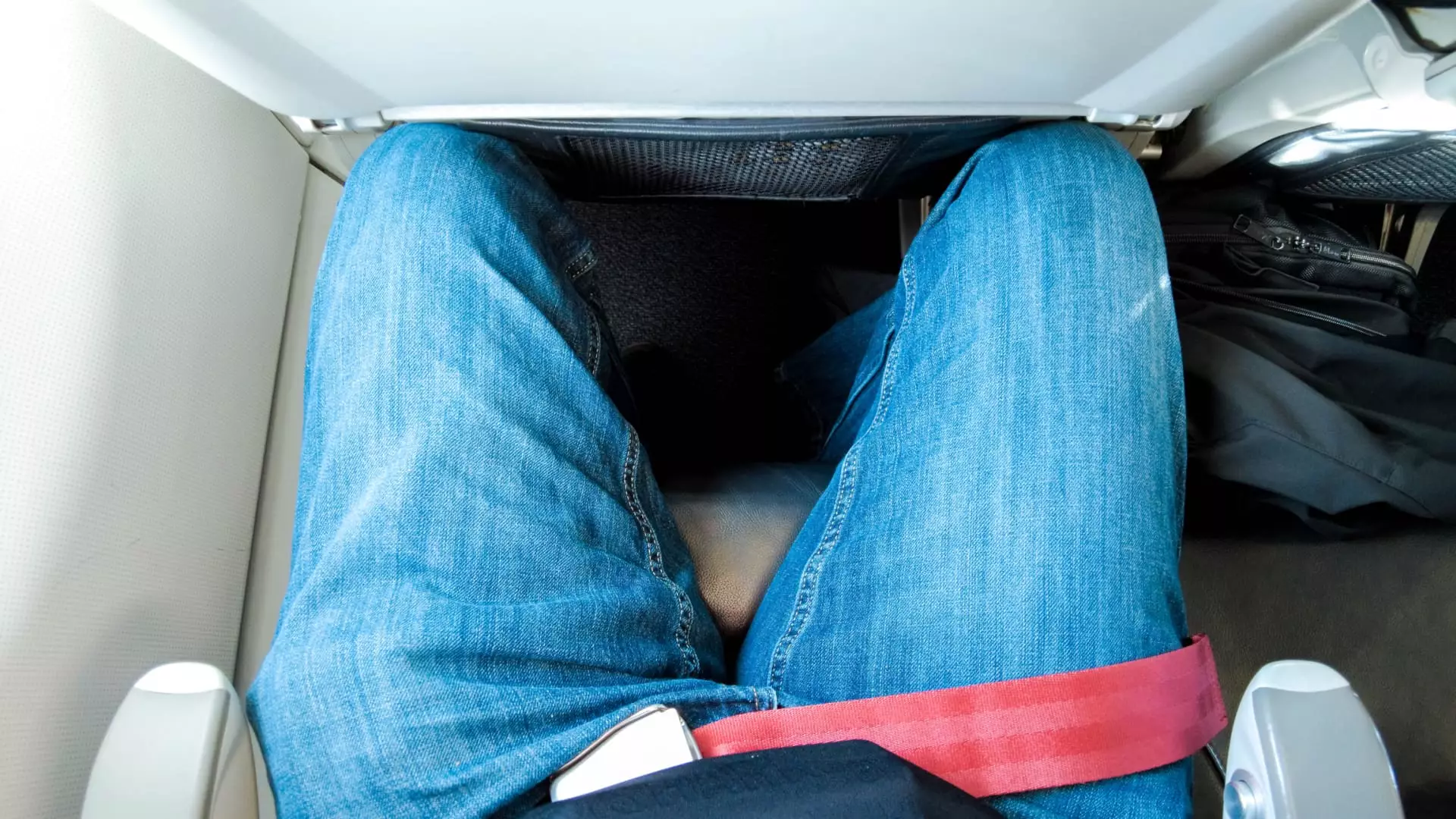In a stunning display of passenger discord, a couple aboard a long-haul Cathay Pacific flight found themselves banned from the airline after an altercation over seat reclining escalated to a public outcry. This incident, which occurred on September 17 during a 14-hour journey from Hong Kong to London, has ignited discussions not just about in-flight etiquette but also about broader cultural tensions and customer service protocols within the airline industry.
Footage of the altercation went viral after being posted on Xiaohongshu, a social media platform likened to Instagram in the West. The video depicted the couple engaged in aggressive behavior towards a female passenger who had chosen to recline her seat. Rather than a simple disagreement over comfort, this encounter showcased a complex interplay of social expectations and personal space invading an increasingly crowded air travel environment.
Cathay Pacific’s subsequent decision to ban the disruptive couple underscores their commitment to preserving passenger rights and safety. The official statement released on Xiaohongshu expressed the airline’s apologies for the incident and reiterated its zero-tolerance policy towards any actions that disrespect fellow passengers or violate safety regulations. Their response embodies the growing necessity for airlines to proactively address the changing dynamics of air travel, where behavior standards are increasingly challenged by cramped quarters and varying cultural sensitivities.
As the drama unfolded on the flight, the female passenger recounted her traumatic experience of receiving harassing remarks and being physically jostled in her seat, leading her to seek help from the flight attendants. However, this call for assistance yielded little relief, as she claimed the crew suggested she compromise her comfort. The lack of adequate intervention has raised significant questions about crew training and emergency protocols in preventing such confrontations from escalating.
Beneath the surface of this seemingly petty disagreement lies a broader narrative concerning the cultural divide between mainland China and Hong Kong. The video revealed not only the heated exchange but also the derogatory remarks made by the couple, referring to the reclining passenger as a “mainlander”. This incident has reignited historical tensions stemming from the 1997 handover of Hong Kong from British rule to China, which have been exacerbated by political strife and social movements over the years.
Social media users, especially on mainland platforms, criticized Cathay Pacific’s handling of the situation, suggesting that the airline demonstrated bias against mainland travelers. Many commented that the airline’s initial response came only after public pressure mounted, reflecting a deeper sentiment among mainland Chinese travelers who frequently express feelings of alienation and discrimination when visiting Hong Kong. These tensions reveal that air travel is not just about crossing geographical boundaries; it often reflects the complexities of identity and societal change.
At the heart of this conflict is the contentious issue of reclining seats—a practice that once went unnoticed but has now become highly controversial as the space within economy cabins shrinks. While proponents of reclining argue that the seat is designed to provide comfort, opponents vehemently claim that it infringes on the personal space of the passenger behind. The evolving perception of airplane etiquette has left many unsure about the appropriate norms aboard.
Seat reclining disputes seldom have a clear resolution, often relying on mutual respect and situational context. Factors such as the flight duration, the time of day, and the behavior of fellow passengers greatly influence opinions on whether reclining a seat is acceptable. Additionally, the notion of “airplane etiquette” has undergone significant shifts, leading to an increasingly polarized discussion among travelers.
This particular incident reflects a culmination of frustrations within the airline industry, where customers are left to navigate not only physical space constraints but also emotional ones. As disputes over seating arrangements grow more prominent, it becomes evident that airlines must not only enforce behavioral standards but also redefine them in a way that addresses the evolving landscape of passenger interactions.
As air travel continues to be a shared experience among diverse groups, the need for effective conflict resolution strategies within the airline industry is becoming increasingly urgent. Cathay Pacific’s response to this incident serves as a timely reminder for all airlines that fostering a harmonious flying environment is essential not only for reputation but for the safety and enjoyment of all passengers on board.
Ultimately, as airline policies are put to the test in such confrontations, it is crucial that we also examine our individual expectations and responsibilities as travelers. The lesson learned from this encounter goes beyond merely delegating blame; it highlights the need for empathy and mutual respect in shared spaces, including the confined quarters of an aircraft.
As we venture forth in our travels, let’s not forget that the skies are not only a place for reaching our destinations but also where we intertwine our diverse narratives—sometimes warming hearts, and at other times igniting disputes. With continued discourse on these topics, we may yet find a common ground that ensures our collective journey is smoother for everyone involved.


Leave a Reply